The Orion P3s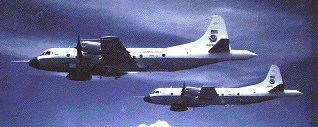 In 1973
it was decided that the DC6s were reaching the end of their useful
life, and that NOAA, NHRL, and RFF needed to make a major
financial commitment to an upgrade of the air fleet. A C130 had
been obtained, but more airplatforms were needed. NHRL and
RFF went through a period of belt tightening, including reductions
in staff and cancelling all STORMFURY flights for three years, in
order to finance the purchase of two Lockeed P3 Orions. P3s had
been used by the USN as sub hunters and proved to be reliable workhorses.
The new aircraft were outfitted with the latest in computers and
weather instruments, including three different radar antenna on
each aircraft. The quality of the field data was boosted considerably
when these planes became available in 1975 and 1976. In 1973
it was decided that the DC6s were reaching the end of their useful
life, and that NOAA, NHRL, and RFF needed to make a major
financial commitment to an upgrade of the air fleet. A C130 had
been obtained, but more airplatforms were needed. NHRL and
RFF went through a period of belt tightening, including reductions
in staff and cancelling all STORMFURY flights for three years, in
order to finance the purchase of two Lockeed P3 Orions. P3s had
been used by the USN as sub hunters and proved to be reliable workhorses.
The new aircraft were outfitted with the latest in computers and
weather instruments, including three different radar antenna on
each aircraft. The quality of the field data was boosted considerably
when these planes became available in 1975 and 1976. 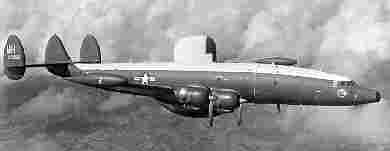 In 1975 the USN ended thirty years of hurricane reconnaissance duty
and deactivated its Hurricane Hunter squadrons, leaving this function
to the USAF and the NOAA aircraft.
In 1975 the USN ended thirty years of hurricane reconnaissance duty
and deactivated its Hurricane Hunter squadrons, leaving this function
to the USAF and the NOAA aircraft.  When Dr. LaSeur stepped down in 1977, Dr. Stanley Rosenthal took
over as NHEML Director. Next year it was made an independent
laboratory under ERL, and the year after that NHEML and NHC
were moved across Dixie Highway from the University of Miami campus
to the Gables One Tower. Dr. Rosenthal had been head of the Laboratory's
Theoretical Studies Branch, and under his directorship the emphasis
of research moved away from weather modification studies and toward
computer modeling.
When Dr. LaSeur stepped down in 1977, Dr. Stanley Rosenthal took
over as NHEML Director. Next year it was made an independent
laboratory under ERL, and the year after that NHEML and NHC
were moved across Dixie Highway from the University of Miami campus
to the Gables One Tower. Dr. Rosenthal had been head of the Laboratory's
Theoretical Studies Branch, and under his directorship the emphasis
of research moved away from weather modification studies and toward
computer modeling.Field studies were greatly improving with the new radar systems on the P3s. Insights into the fine structure of hurricane rain bands were gained, while studies of the inner vortex core revealed the process of eyewall replacement.
|
Links of Interest
AOML Tools & Resources
Employee Tools
|
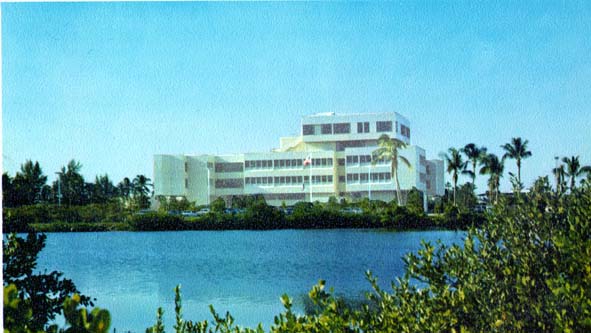 In 1980 NHEML was organizationally placed under the Atlantic
Oceanographic and Meteorology Laboratories (AOML), a group of
Miami-based NOAA laboratories which had been housed on Virginia
Key since 1973. Two years later the Experimental Meteorological
Laboratory portion of NHEML was separated and moved to
Boulder, Colorado and the Lab was again called NHRL.
Another year later NHRL was moved physically out to AOML
on Virginia Key, ending 25 years of co-location with NHC. NHRL
was then renamed the Hurricane Research Division (HRD),
its current sobriquet, when AOML was redesignated a single Laboratory.
In 1980 NHEML was organizationally placed under the Atlantic
Oceanographic and Meteorology Laboratories (AOML), a group of
Miami-based NOAA laboratories which had been housed on Virginia
Key since 1973. Two years later the Experimental Meteorological
Laboratory portion of NHEML was separated and moved to
Boulder, Colorado and the Lab was again called NHRL.
Another year later NHRL was moved physically out to AOML
on Virginia Key, ending 25 years of co-location with NHC. NHRL
was then renamed the Hurricane Research Division (HRD),
its current sobriquet, when AOML was redesignated a single Laboratory.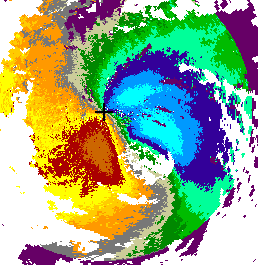 The NOAA C130 was decommissioned in 1981, leaving only the two
P3s to carry on hurricane research. To compensate for this the
instrumentation on the P3s was greatly improved, with Knollenberg
cloud physics probes installed, and in 1982 Doppler processing
added to the tail radars. Doppler allowed scientists to derive
the hurricane's wind fields by either using radar data from both
planes, from a plane and a land based Doppler radar, or even from
the same airplane radar from two perpendicular legs. Instead of
just having wind information from along the aircraft's track,
the wind field from the entire inner core could be mapped out.
This provided researchers with greater insight into hurricane
structure and dynamics.
The NOAA C130 was decommissioned in 1981, leaving only the two
P3s to carry on hurricane research. To compensate for this the
instrumentation on the P3s was greatly improved, with Knollenberg
cloud physics probes installed, and in 1982 Doppler processing
added to the tail radars. Doppler allowed scientists to derive
the hurricane's wind fields by either using radar data from both
planes, from a plane and a land based Doppler radar, or even from
the same airplane radar from two perpendicular legs. Instead of
just having wind information from along the aircraft's track,
the wind field from the entire inner core could be mapped out.
This provided researchers with greater insight into hurricane
structure and dynamics. 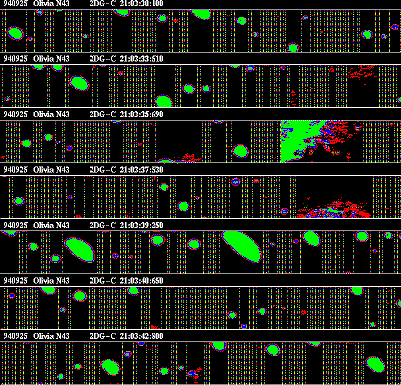 The Knollenberg probes allowed HRD cloud physicists to
image individual cloud particles by using an array of laser diodes.
As particles pass through the array a laser shadow is cast upon
the receiving diodes and the image of the particle is entered
into memory. Scientists can see what sort of particles they are
flying through in real time, whether rain, graupel, ice, or needles.
Also the FSSP probe allows the instantaneous compilation of particle
size statistics.
The Knollenberg probes allowed HRD cloud physicists to
image individual cloud particles by using an array of laser diodes.
As particles pass through the array a laser shadow is cast upon
the receiving diodes and the image of the particle is entered
into memory. Scientists can see what sort of particles they are
flying through in real time, whether rain, graupel, ice, or needles.
Also the FSSP probe allows the instantaneous compilation of particle
size statistics. 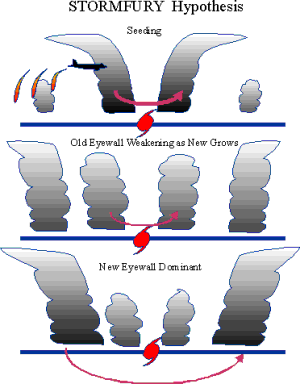 Project STORMFURY came to a formal end in 1982, as no hurricane
modification experiments had been flown in over a decade, and as
serious doubts about the assumptions of STORMFURY came to be
expressed. In part the new cloud physics data showed that the
amount of supercooled liquid water available in a hurricane was
far less than had been thought, and studies of the natural cycles
of storm strength showed that what were thought to be the effect
of seeding might have been natural. HRD scientists
published a paper in 1985 demonstrating many of the flaws in
the original STORMFURY premises. Hurricane modification studies
and experiments were shelved for the forseeable future.
Project STORMFURY came to a formal end in 1982, as no hurricane
modification experiments had been flown in over a decade, and as
serious doubts about the assumptions of STORMFURY came to be
expressed. In part the new cloud physics data showed that the
amount of supercooled liquid water available in a hurricane was
far less than had been thought, and studies of the natural cycles
of storm strength showed that what were thought to be the effect
of seeding might have been natural. HRD scientists
published a paper in 1985 demonstrating many of the flaws in
the original STORMFURY premises. Hurricane modification studies
and experiments were shelved for the forseeable future.
